- Hibiscus: Getting Started with Garden Cultivation
- Choosing the Right Location
- Preparing the Soil
- Planting Hibiscus
- Watering and Fertilizing
- Pruning
- Pest and Disease Control
- Conclusion
- Choosing the Right Hibiscus Varieties for Your Garden
- Factors to Consider
- Popular Hibiscus Varieties
- Preparing the Soil for Hibiscus Planting
- Choosing the right location
- Soil pH and drainage
- Preparing the soil
- Tips for Planting Hibiscus in Your Garden
- 1. Choose the Right Location
- 2. Prepare the Soil
- 3. Dig a Proper Planting Hole
- 4. Water Thoroughly
- 5. Mulch and Fertilize
- 6. Prune and Maintain
- 7. Monitor for Pests and Diseases
- 8. Enjoy the Blooms
- Providing Proper Care for Hibiscus Plants
- 1. Sunlight:
- 2. Watering:
- 3. Fertilizing:
- 4. Pruning:
- 5. Pest and Disease Control:
- 6. Winter Care:
- Protecting Hibiscus from Common Pests and Diseases
- 1. Aphids
- 2. Whiteflies
- 3. Mealybugs
- 4. Fungal Diseases
- 5. Root Rot
- 6. Spider Mites
- Pruning and Shaping Your Hibiscus Plants
- 1. When to prune
- 2. Tools needed
- 3. Pruning dead or damaged branches
- 4. Removing crowded or crossing branches
- 5. Shaping your hibiscus plants
- 6. Pruning for size control
- 7. Maintenance pruning
- Propagation Techniques for Hibiscus
- 1. Seeds
- 2. Cuttings
- 3. Layering
- Questions and Answers:
- What is hibiscus and what are its main characteristics?
- How do I choose the right location for planting hibiscus?
- How often should I water my hibiscus plants?
- Can I propagate hibiscus plants from cuttings?
- Are there any common pests or diseases that affect hibiscus plants?
- Videos: HIBISCUS PLANT GROWING TIPS
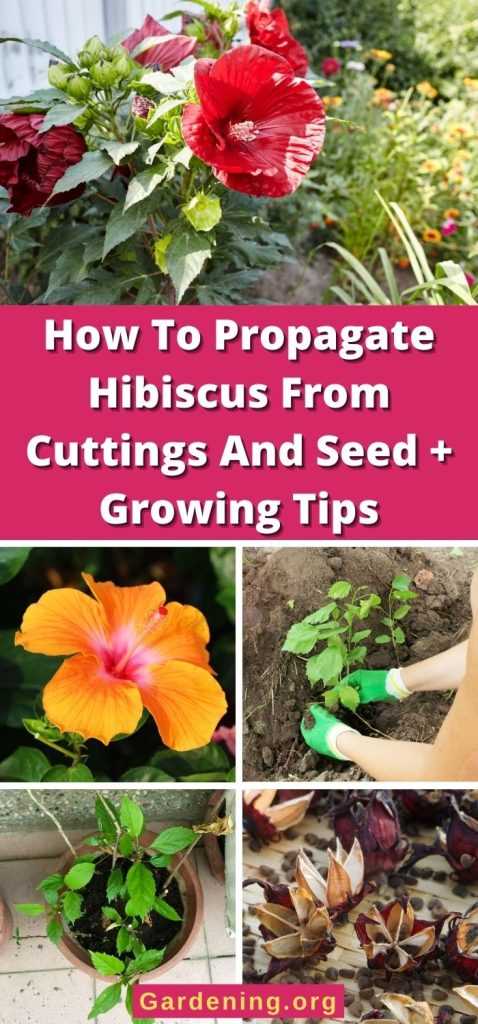
Hibiscus is a vibrant and colorful flower that is known for its tropical vibe and stunning beauty. With their eye-catching blooms and lush green foliage, hibiscus plants are a popular choice for gardeners looking to add a touch of exotic flair to their outdoor space.
Successful cultivation and propagation of hibiscus plants require careful attention to their specific needs, as these plants thrive best under certain conditions. To ensure the healthy growth and abundant blooming of your hibiscus plants, it is essential to follow some essential tips that will help you maintain these tropical beauties.
One crucial factor when cultivating hibiscus plants is to provide them with the right amount of sunlight. Hibiscus plants need at least six hours of direct sunlight each day. They prefer bright but filtered light during the hottest parts of the day, as direct sunlight can scorch their delicate petals. Placing them in a location that receives morning sun and afternoon shade can create the ideal conditions for their growth.
Another key aspect to consider when cultivating hibiscus plants is providing them with well-draining soil. Hibiscus plants are susceptible to root rot if their roots sit in wet soil for too long. One way to ensure proper drainage is to mix organic matter, such as compost, into the soil before planting. This will improve the soil’s texture and prevent it from becoming waterlogged, promoting healthy root growth.
Propagation is an excellent way to expand your hibiscus collection or share the beauty of these plants with others. One simple method for propagating hibiscus plants is by taking stem cuttings. Select a healthy stem from an existing plant, making sure it has a few sets of leaves. Remove the lower leaves and dip the cut end into a rooting hormone powder. Plant the cutting in a pot filled with well-draining soil, and place it in a warm and sunny location. With regular watering and proper care, the cutting will develop roots and grow into a new hibiscus plant.
Hibiscus: Getting Started with Garden Cultivation
Choosing the Right Location
When starting your hibiscus garden, it’s important to choose the right location. Hibiscus plants require full sun to thrive, so find a spot in your garden that receives at least six hours of direct sunlight each day. Additionally, make sure the location has well-draining soil to prevent waterlogged roots.
Preparing the Soil
Before planting your hibiscus, prepare the soil to provide the best growing conditions for your plants. Start by removing any weeds or grass from the planting area. Then, loosen the soil with a garden fork or tiller to a depth of about 12 inches. Mix in some organic matter, such as compost or well-rotted manure, to improve the soil’s fertility and drainage.
Planting Hibiscus
Once you have prepared the soil, it’s time to plant your hibiscus. Dig a hole that is slightly larger than the root ball of your plant. Place the plant in the hole, making sure it is at the same level as it was in its nursery container. Backfill the hole with soil, gently pressing it around the roots to remove any air pockets. Give the plant a thorough watering to help settle the soil.
Watering and Fertilizing
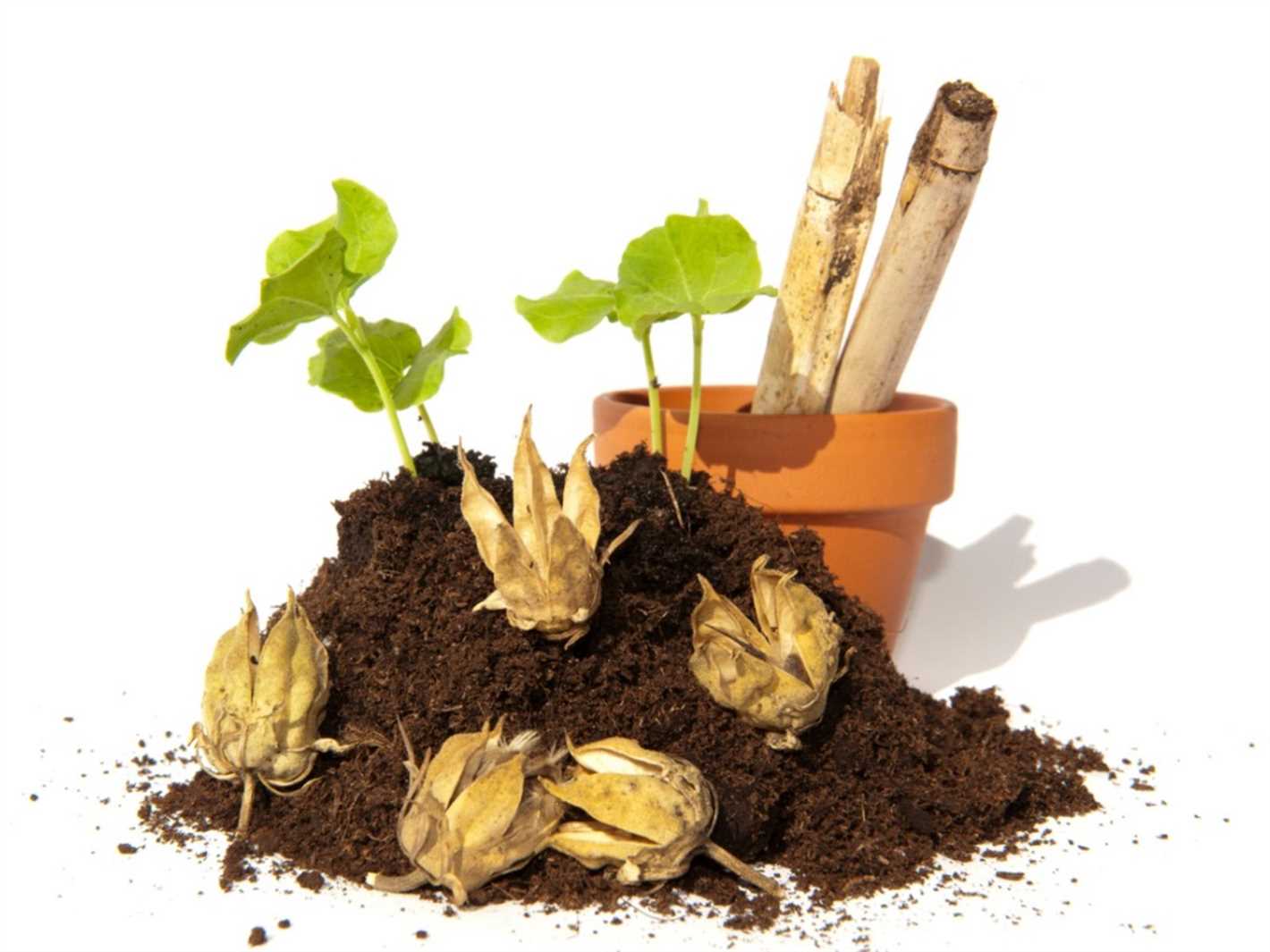
Proper watering and fertilizing are essential for the healthy growth of your hibiscus plants. Water your hibiscus regularly, aiming for about an inch of water per week. Be sure to water deeply, allowing the water to reach the plant’s root system. Fertilize your hibiscus every four to six weeks during the growing season with a balanced slow-release fertilizer. Follow the manufacturer’s instructions for application rates.
Pruning
Regular pruning helps to keep your hibiscus plants looking healthy and promotes better flowering. Prune your hibiscus in early spring before new growth appears. Remove any dead or diseased branches, as well as any weak or crossing stems. You can also shape the plant by selectively pruning to maintain a desired size and shape.
Pest and Disease Control
Keep an eye out for common pests and diseases that can affect hibiscus plants. Aphids, spider mites, and whiteflies are some of the pests that may infest hibiscus. Treat pest infestations with insecticidal soap or horticultural oil. Fungal diseases, such as powdery mildew and leaf spot, can be prevented by providing good air circulation around the plants and avoiding overhead watering.
Conclusion
By following these tips, you can get started with garden cultivation of hibiscus plants. Remember to choose the right location, prepare the soil, and provide proper watering and fertilizing. Regular pruning and pest control are also important for maintaining healthy plants. With proper care, your hibiscus garden will reward you with vibrant blooms and lush foliage.
Choosing the Right Hibiscus Varieties for Your Garden
When it comes to choosing hibiscus varieties for your garden, there are many options to consider. With their beautiful blooms and lush foliage, hibiscus plants can add a tropical touch to any garden.
Factors to Consider
- Climate: Hibiscus plants thrive in warm, tropical climates. It is important to choose varieties that are suitable for your specific climate zone to ensure their successful growth.
- Size: Hibiscus plants come in a variety of sizes, ranging from small shrubs to large trees. Consider the available space in your garden and choose a variety that will fit well and not overpower other plants.
- Bloom color: One of the most appealing features of hibiscus plants is their vibrant and diverse bloom colors. Choose varieties that offer the colors you desire, whether it’s bold reds, bright yellows, or delicate pinks.
- Growth habit: Some hibiscus varieties have an upright growth habit, while others are more spreading. Consider the overall shape and growth habit of a variety to ensure it complements your garden design.
Popular Hibiscus Varieties
Here are some popular hibiscus varieties that you may consider for your garden:
| Variety | Size | Bloom Color | Growth Habit |
|---|---|---|---|
| Rosa-Sinensis | Medium | Various (red, pink, white, yellow) | Upright |
| Syriacus | Tall | Various (white, pink, purple) | Upright |
| Acetosella | Small | Red | Spreading |
| Moscheutos | Tall | Various (red, pink, white) | Upright |
These are just a few examples of the many hibiscus varieties available. It is always a good idea to research and consult with local gardening experts or nurseries to ensure you choose the right varieties for your specific garden conditions.
By considering factors such as climate, size, bloom color, and growth habit, you can choose hibiscus varieties that will thrive in your garden and create a stunning display of color and beauty.
Preparing the Soil for Hibiscus Planting
Choosing the right location
When preparing the soil for hibiscus planting, it is essential to choose the right location. Hibiscus plants require full sun to thrive, so select an area in your garden that receives at least six hours of direct sunlight per day. Ensure that the location is also sheltered from strong winds, as hibiscus plants have delicate flowers and can be easily damaged.
Soil pH and drainage
Hibiscus plants prefer slightly acidic soil with a pH range of 6.0 to 6.5. Before planting, test the soil pH using a home testing kit or by sending a sample to a local agricultural extension service. If the pH is below the optimal range, you can raise it by adding lime. On the other hand, if the soil is too alkaline, you can lower the pH by incorporating organic matter such as peat moss or compost.
In addition to pH, hibiscus plants require well-draining soil. Poorly drained soil can cause root rot and other diseases. To improve drainage, amend the soil with organic matter such as compost or aged manure. This will also help to improve the soil’s fertility and moisture-retaining capacity.
Preparing the soil
Before planting your hibiscus, it is important to prepare the soil properly. Start by removing any weeds or vegetation from the planting area. This will help prevent competition for nutrients and space. Loosen the soil with a garden fork or tiller to a depth of about 12 inches (30 cm). This will create a loose and friable soil texture, allowing the hibiscus roots to penetrate easily.
If the soil is heavy clay or compacted, consider adding sand or perlite to improve its texture and drainage. Work the organic matter, such as compost or aged manure, into the soil to enrich it with nutrients and improve moisture retention. Aim for a soil consistency that crumbles easily in your hand but still retains moisture.
Once the soil is prepared, you are ready to plant your hibiscus. Follow the planting instructions provided with your hibiscus plant or seedlings, and ensure that you water the newly planted hibiscus thoroughly.
Tips for Planting Hibiscus in Your Garden
Planting hibiscus in your garden can add vibrant colors and lush foliage to your landscape. Follow these tips to ensure successful growth and blooming of your hibiscus plants:
1. Choose the Right Location
Hibiscus plants thrive in sunny locations with well-drained soil. Select a spot in your garden that receives at least 6 hours of direct sunlight daily. Avoid areas with strong winds or excessive shade.
2. Prepare the Soil
Before planting, improve the soil by adding organic matter such as compost or well-rotted manure. This will enhance the soil’s fertility, drainage, and moisture-retaining ability, providing a favorable environment for your hibiscus plants.
3. Dig a Proper Planting Hole
Ensure the planting hole is twice as wide and as deep as the root ball of your hibiscus plant. This will allow the roots to spread easily and establish themselves in the soil.
4. Water Thoroughly
After planting, water the hibiscus thoroughly to settle the soil and remove any air pockets around the roots. Hibiscus plants require regular watering, especially during dry periods. However, avoid overwatering, as this can lead to root rot.
5. Mulch and Fertilize
Apply a layer of organic mulch around the base of your hibiscus plants to conserve moisture, suppress weeds, and improve the soil’s fertility. Additionally, fertilize your hibiscus plants regularly with a balanced fertilizer to promote healthy growth and abundant blooms.
6. Prune and Maintain
Prune your hibiscus plants regularly to maintain their shape and remove any dead or diseased branches. In colder regions, protect your hibiscus plants during winter by covering them with a thick layer of mulch or bringing them indoors.
7. Monitor for Pests and Diseases
Keep an eye out for pests such as aphids, mealybugs, and spider mites, as well as diseases like leaf spot and powdery mildew. Treat any infestations or infections promptly to prevent further damage to your hibiscus plants.
8. Enjoy the Blooms
Once your hibiscus plants are established and well-cared for, they will reward you with beautiful, showy blooms. Sit back, relax, and enjoy the stunning display of colors in your garden.
By following these tips, you can successfully plant hibiscus in your garden and enjoy their vibrant beauty for years to come.
Providing Proper Care for Hibiscus Plants
1. Sunlight:
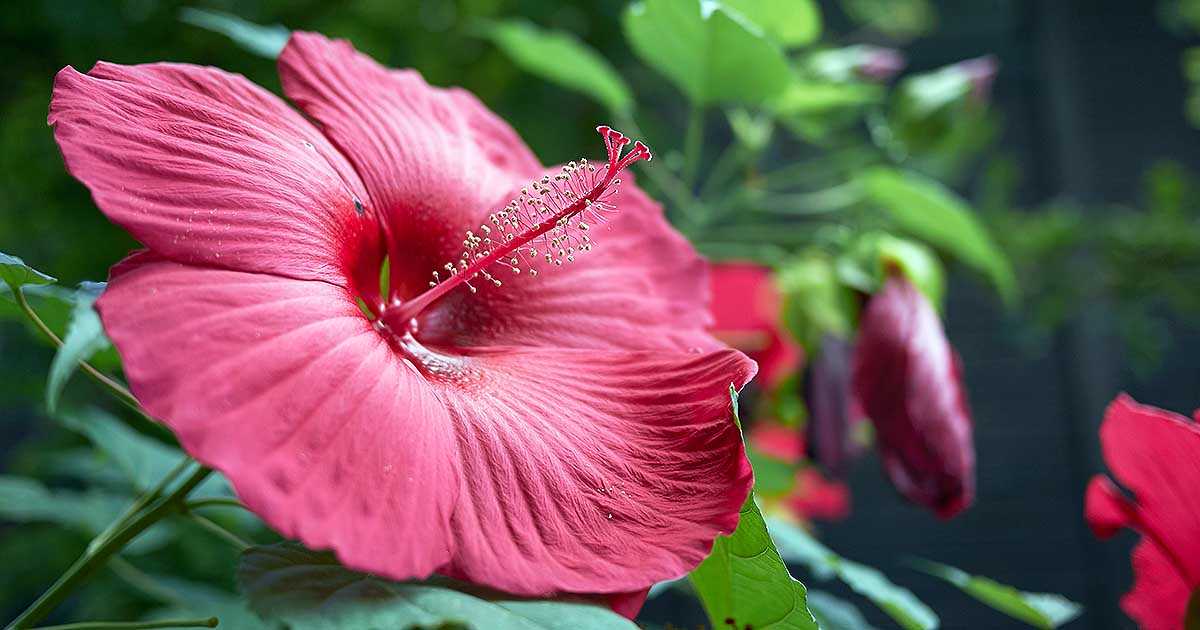
Hibiscus plants thrive in full sunlight, so it is important to choose a location in your garden that receives at least 6-8 hours of direct sunlight per day. If you are growing your hibiscus indoors, place it near a south or west-facing window to ensure it gets enough sunlight.
2. Watering:
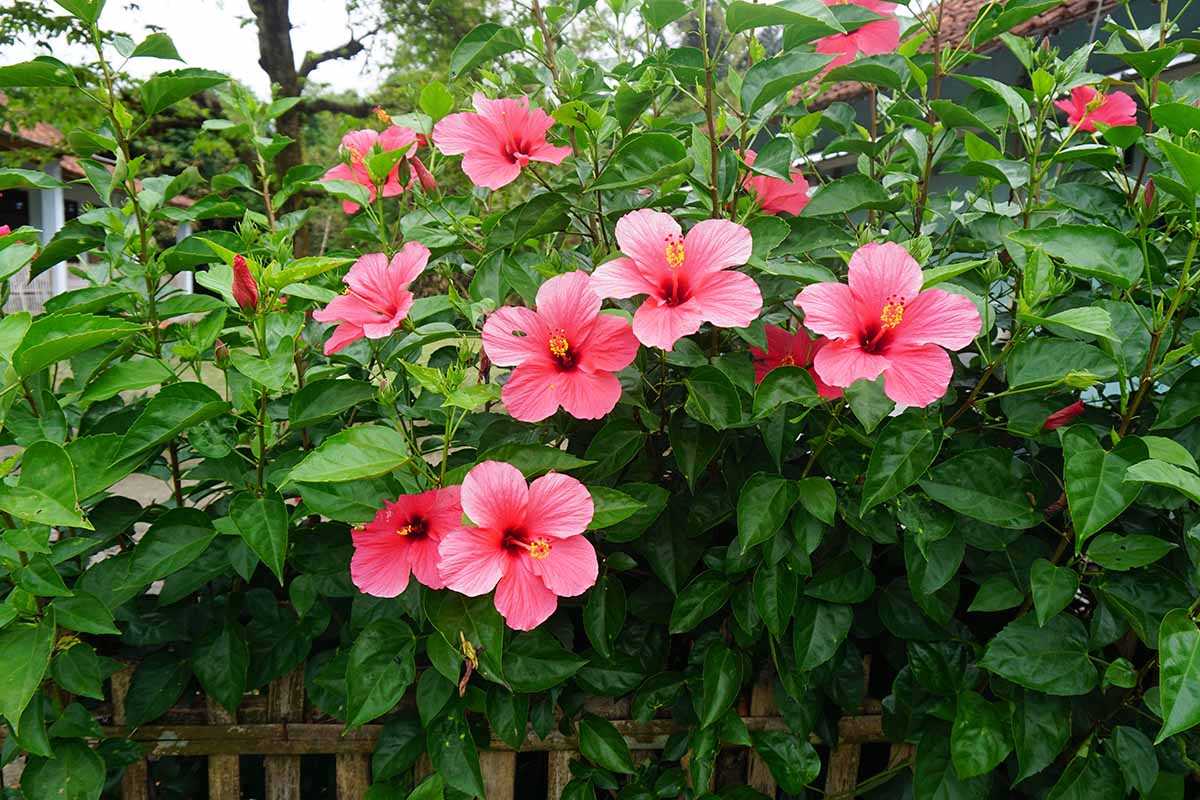
- Water your hibiscus regularly to keep the soil evenly moist but not waterlogged.
- Check the soil moisture by sticking your finger about an inch into the soil. If it feels dry, it’s time to water.
- Water the plant thoroughly until the water drains out of the bottom of the pot. Avoid allowing water to sit in the saucer beneath the pot as this can lead to root rot.
- During hot summer months, hibiscus plants may need more frequent watering to prevent wilting.
3. Fertilizing:
- Apply a balanced, slow-release fertilizer formulated for flowering plants every six to eight weeks during the growing season. Follow the instructions on the packaging for application rates.
- Alternatively, you can use a liquid fertilizer diluted to half strength and apply it every two weeks.
- Avoid over-fertilizing, as this can result in poor flowering or damage to the plant.
4. Pruning:
- Regular pruning helps promote bushier growth and more abundant flowering.
- Trim off any dead or diseased branches using clean, sharp pruning shears.
- Pinch back the tips of the branches to encourage branching and fuller growth.
- Prune hibiscus plants in late winter or early spring before new growth starts.
5. Pest and Disease Control:
- Keep an eye out for common pests such as aphids, whiteflies, and spider mites. Use insecticidal soap or neem oil to control these pests.
- Prevent fungal diseases such as powdery mildew by ensuring good air circulation around the plant and avoiding overhead watering.
- If you notice any signs of disease, promptly remove affected leaves or flowers and treat the plant with an appropriate fungicide.
6. Winter Care:
- Hibiscus plants are tropical, so they need to be protected from cold temperatures.
- If you live in a frost-prone area, bring your hibiscus indoors during the winter or cover it with a frost blanket.
- Keep the plant in a cool (50-60°F) and well-lit location during the winter months, and reduce watering to let the plant go into a semi-dormant state.
- Once the risk of frost has passed, you can move your hibiscus back outside.
By providing the proper care and attention, your hibiscus plants will reward you with beautiful blooms throughout the growing season.
Protecting Hibiscus from Common Pests and Diseases
Hibiscus plants are susceptible to several common pests and diseases. By being proactive and taking preventative measures, you can help protect your hibiscus from these threats. Here are some tips and strategies to keep your hibiscus healthy and vibrant.
1. Aphids
- Inspect your hibiscus regularly for aphids, which are small, soft-bodied insects that can cluster on new growth.
- If you spot aphids, spray them off with a strong jet of water or use insecticidal soap or neem oil.
- Encourage beneficial insects like ladybugs and lacewings, as they feed on aphids.
2. Whiteflies
- Check the undersides of your hibiscus leaves for whiteflies, which are tiny, white insects that fly up when disturbed.
- Use yellow sticky traps to monitor and catch adult whiteflies.
- If you have a severe infestation, use insecticidal soap or neem oil to control the population.
3. Mealybugs
- Inspect your hibiscus for mealybugs, which are small, soft-bodied insects covered in a white, waxy substance.
- Remove mealybugs by rubbing them off with a cotton swab dipped in rubbing alcohol.
- If the infestation persists, use insecticidal soap or neem oil.
4. Fungal Diseases
- Prevent fungal diseases like powdery mildew and leaf spot by avoiding overhead watering and ensuring good air circulation around your hibiscus.
- If you notice any signs of fungal infection, remove and destroy the affected leaves or parts of the plant.
- Apply a fungicide labeled for use on hibiscus, following the instructions carefully.
5. Root Rot
- Avoid overwatering your hibiscus, as excess moisture can lead to root rot.
- Ensure your hibiscus is planted in well-draining soil and use a container with drainage holes.
- If you suspect root rot, remove the affected plant from the soil, trim away any damaged roots, and repot in fresh, well-draining soil.
6. Spider Mites
- Inspect your hibiscus for spider mites, which are tiny pests that can cause stippling and discoloration of leaves.
- Use a hand lens to look for small webs or mites on the underside of leaves.
- If you have a spider mite infestation, spray your hibiscus with a strong stream of water to dislodge the mites or use insecticidal soap or neem oil.
By keeping an eye on your hibiscus plants and implementing these pest and disease prevention measures, you can help ensure they thrive and produce beautiful blooms. Regular monitoring, early detection, and prompt action are key to maintaining healthy hibiscus plants.
Pruning and Shaping Your Hibiscus Plants
Pruning is an important aspect of caring for your hibiscus plants. It helps to keep them healthy, promote new growth, and shape them for a more desirable form. Here are some tips on how to properly prune and shape your hibiscus plants:
1. When to prune
The best time to prune your hibiscus plants is in late winter or early spring, before new growth begins. This allows the plant to recover and start growing again during the warmer months.
2. Tools needed
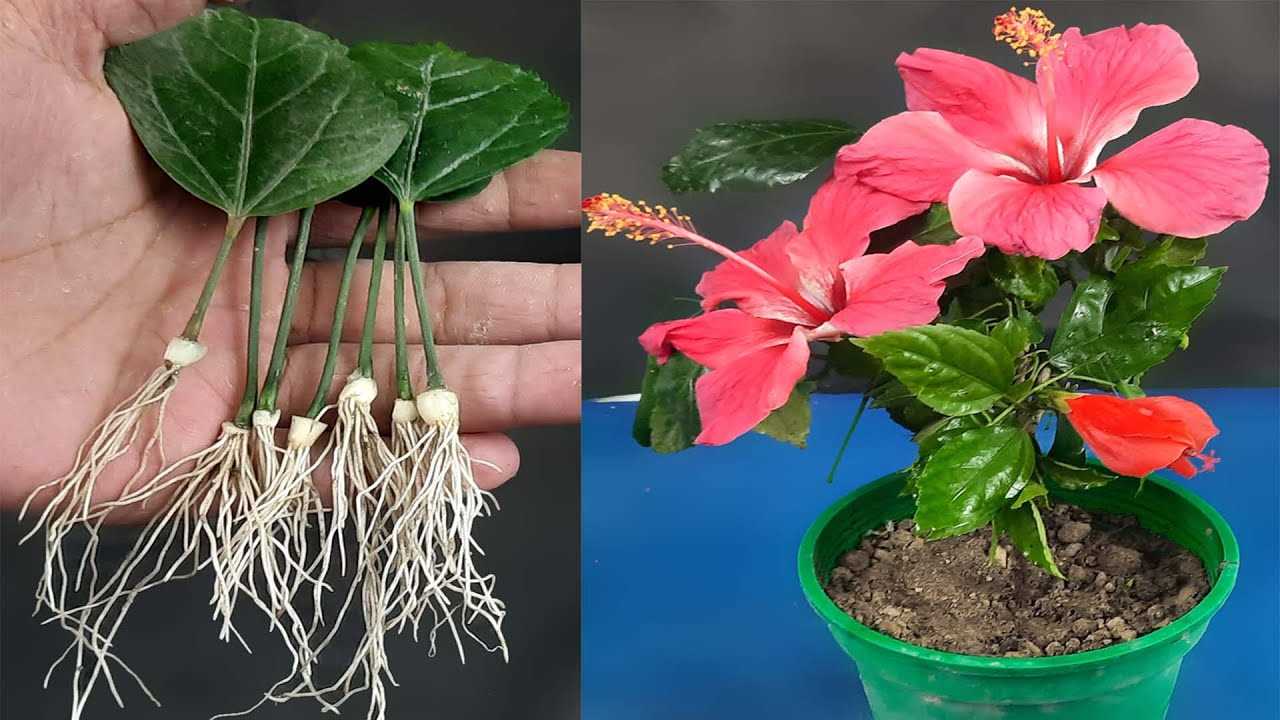
You will need a pair of sharp pruning shears or loppers to cut through the thick stems of hibiscus plants. Make sure your tools are clean and sharp to prevent any damage to the plant.
3. Pruning dead or damaged branches
Start by removing any dead or damaged branches first. These branches not only detract from the plant’s appearance but can also serve as entry points for pests and diseases. Cut the branches back to healthy, green growth.
4. Removing crowded or crossing branches
If you notice branches that are crossing each other or growing too close together, it’s best to remove the weaker one. This will improve air circulation and prevent disease. Cut the branch back to where it meets another branch or the main stem.
5. Shaping your hibiscus plants
You can shape your hibiscus plants into a more desirable form by selectively pruning certain branches. Trim back long, leggy branches to encourage bushier growth. Cut back any overly dense areas to allow for better airflow. Aim for a balanced and symmetrical shape.
6. Pruning for size control
If your hibiscus plants have become too large or are growing in a confined space, you can prune them back for size control. Cut back the branches to the desired height or width, but be careful not to remove too much foliage at once, as it can stress the plant.
7. Maintenance pruning
To keep your hibiscus plants looking their best, perform regular maintenance pruning. This involves removing spent flowers, deadheading, and lightly trimming back any stray or unruly branches. This will encourage continuous blooming and keep the plant looking neat.
Remember to always clean your pruning tools between cuts to prevent the spread of diseases. Also, be careful not to prune your hibiscus plants too much, as this can inhibit their ability to produce flowers. With proper pruning and shaping, your hibiscus plants will thrive and provide you with beautiful blooms season after season.
Propagation Techniques for Hibiscus
Hibiscus can be propagated through various methods to ensure successful garden cultivation. Here are some of the common propagation techniques for hibiscus:
1. Seeds
One of the simplest ways to propagate hibiscus is through seeds. Here’s how you can do it:
- Collect ripe hibiscus seed pods.
- Open the pods and remove the seeds.
- Clean the seeds by removing any excess pulp.
- Soak the seeds in warm water for 24 hours to enhance germination.
- Plant the seeds in seed trays or pots filled with well-draining soil.
- Keep the soil lightly moist and place the trays/pots in a warm and sunny location.
- Once the seedlings have grown a few inches tall, transplant them into larger pots or directly into the garden.
2. Cuttings
Another popular method of propagating hibiscus is through stem cuttings. Follow these steps to propagate hibiscus through cuttings:
- Select a healthy, non-flowering stem from the parent plant.
- Using a clean, sharp knife or pruners, cut a 6-8 inch section of the stem just below a set of leaves.
- Remove any leaves from the lower half of the cutting.
- Dip the cut end of the stem in rooting hormone to enhance root development.
- Insert the cutting into a well-draining potting mix or vermiculite, making sure to bury at least half of the stem.
- Place the pot or tray in a warm, bright location, away from direct sunlight.
- Keep the soil moist, but not waterlogged, until roots start to develop.
- Once roots have formed, transplant the cutting into a larger pot or directly into the garden.
3. Layering
Layering is another effective way to propagate hibiscus. Here’s how you can do it:
- Select a low-hanging hibiscus branch that can be easily bent towards the ground.
- Make a small cut or scrape on the underside of the branch, where it touches the ground.
- Apply rooting hormone to the wounded area.
- Bury the wounded section of the branch in a shallow trench and secure it with weights or stakes.
- Keep the buried section of the branch moist by regularly watering the area.
- After a few weeks or months, roots will develop from the wounded area.
- Once roots have formed, cut the new plantlet from the parent plant and transplant it into a pot or directly into the garden.
These propagation techniques for hibiscus can be successful if done correctly. Experiment with different methods to find the one that works best for you and enjoy the beauty of hibiscus in your garden.
Questions and Answers:
What is hibiscus and what are its main characteristics?
Hibiscus is a genus of flowering plants in the mallow family, Malvaceae. It is known for its large, showy flowers with five or more petals. Hibiscus plants can range in size from small shrubs to small trees and can be deciduous or evergreen.
How do I choose the right location for planting hibiscus?
Hibiscus plants prefer full sun, so it’s important to choose a location that receives at least 6 hours of direct sunlight per day. They also prefer well-draining soil and should be protected from strong winds.
How often should I water my hibiscus plants?
While hibiscus plants prefer moist soil, it’s important not to overwater them. Watering once or twice a week, depending on the weather and soil conditions, should be sufficient. Make sure to check the soil moisture level before watering.
Can I propagate hibiscus plants from cuttings?
Yes, hibiscus plants can be easily propagated from cuttings. Take a 6-8 inch cutting from a healthy, mature plant and remove the lower leaves. Dip the cut end in rooting hormone and plant it in a well-draining potting mix. Keep the soil moist and provide indirect sunlight until the cutting establishes roots.
Are there any common pests or diseases that affect hibiscus plants?
Yes, hibiscus plants can be susceptible to aphids, whiteflies, and scale insects. They can also be affected by fungal diseases such as powdery mildew and black spot. Regularly inspect your plants for any signs of pests or diseases and take appropriate measures to control them.







